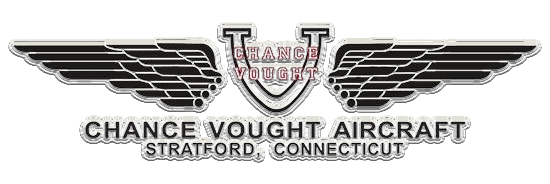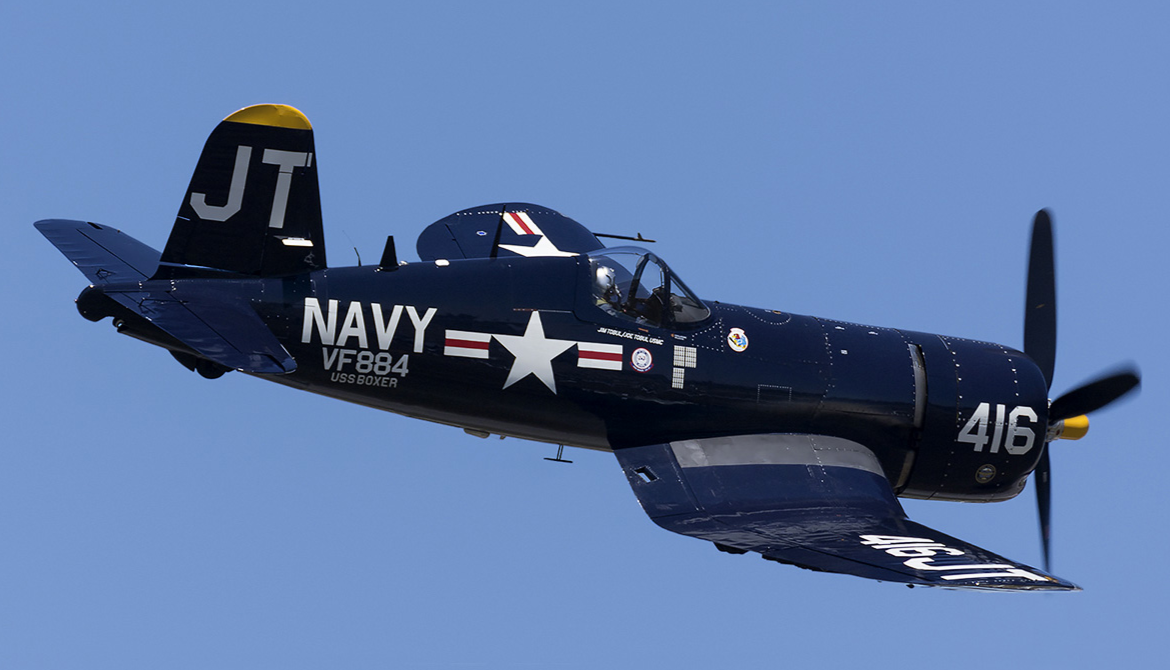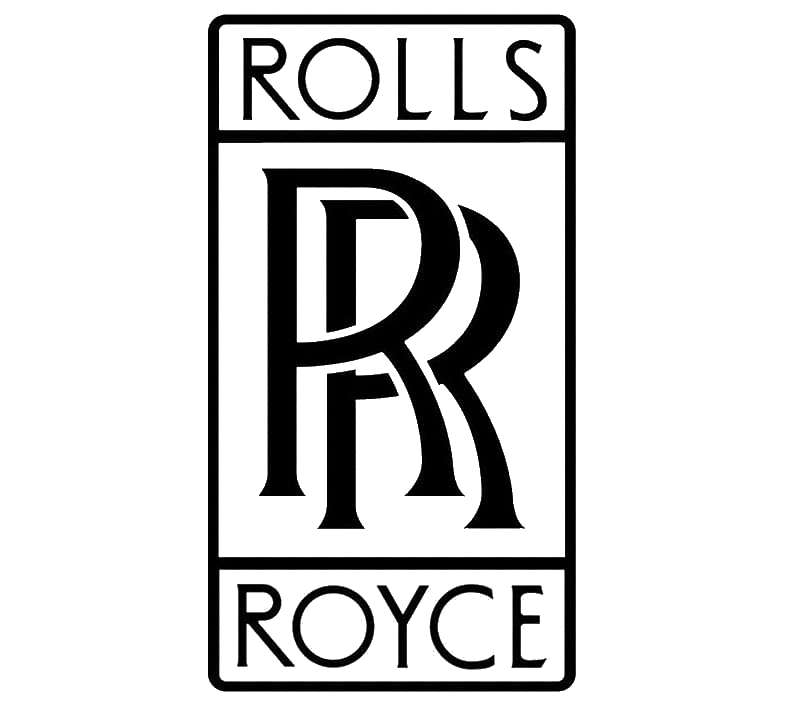LTV-Chance-Vought F4U-4 Corsair
 |
|
| General information | |
|---|---|
| Type | Carrier-based fighter-bomber |
| National origin | United States |
| Manufacturer | Chance Vought |
| Built by | Goodyear Brewster |
| Primary users | United States Navy |
| Number built | More than 12,571 |
| History | |
| Manufactured | 1942–1953 |
| Introduction date | 28 December 1942 |
| First flight | 29 May 1940 |
| Retired |
|
| Variants | Goodyear F2G Corsair |
.
History LTV-Chance-Vought
F4U-4 Corsair "Whistling Death"
Manufactured 1942–1953 Introduction date 28 December 1942
First flight 29 May 1940

The Vought F4U Corsair is an American fighter aircraft which saw service primarily in World War II and the Korean War. Designed and initially manufactured by Chance Vought, the Corsair was soon in great demand; additional production contracts were given to Goodyear, whose Corsairs were designated FG, and Brewster, designated F3A.
The Corsair was designed and operated as a carrier-based aircraft, and entered service in large numbers with the U.S. Navy in late 1944 and early 1945. It quickly became one of the most capable carrier-based fighter-bombers of World War II. Some Japanese pilots regarded it as the most formidable American fighter of World War II and its naval aviators achieved an 11:1 kill ratio. Early problems with carrier landings and logistics led to it being eclipsed as the dominant carrier-based fighter by the Grumman F6F Hellcat, powered by the same Double Wasp engine first flown on the Corsair's initial prototype in 1940. Instead, the Corsair's early deployment was to land-based squadrons of the U.S. Marine Corps and U.S. Navy.
In February 1938, the U.S. Navy Bureau of Aeronautics published two requests for proposal for twin-engined and single-engined fighters. For the single-engined fighter, the Navy requested the maximum obtainable speed, and a minimum stalling speed not higher than 70 miles per hour (110 km/h). A range of 1,000 miles (1,600 km) was specified. The fighter had to carry four guns, or three with increased ammunition. Provision had to be made for antiaircraft bombs to be carried in the wing. These small bombs would, according to thinking in the 1930s, be dropped on enemy aircraft formations.

0
KmCeiling
0
KmCombat RANGE
0
Km/hAircraft Speed
0
Max Crew
Photo Gallery
LTV-Chance-Vought
F4U-4 Corsair "Whistling Death"


LTV-Chance-Vought
F4U-4 Corsair "Whistling Death"
General Info
-
-
- Crew: One
- Length: 33 ft 8 in (10.26 m)
- Wingspan: 41 ft 0 in (12.50 m)
- Height: 14 ft 9 in (4.50 m)
- Wing area: 314 sq ft (29.17 m2)
-
Powerplant
-
-
- Empty weight: (4,238 kg)
- Gross weight: (6,654 kg)
- Max takeoff weight: (6,592 kg)
- Powerplant: 1 × Pratt & Whitney R-2800-18W radial engine, 2,380 hp
- Propellers: 4-bladed
-
Performance
- Maximum speed: 446 mph (717 km/h, 385 kn)
- Cruise speed: (346 km/h,
- Stall speed: 89 mph (143 km/h, )
- Range: (1,617 km, 873 nmi)
- Combat range: 328 mi (528 km,
- Service ceiling: (12,600 m)
Armament
- Guns: 6 × 0.50 in (12.7 mm) M2 Browning machine guns 375-400 rounds per gun
- Rockets: 8 × 5 in (12.7 cm) high velocity aircraft rockets and/or
- Bombs: 4,000 lb (1,800 kg)
Links to Youtube & Others
The MB-339 was developed during the 1970s in response to an Italian Air Force requirement that sought a replacement for the service's existing fleet of Aermacchi MB-326s.
LTV-Chance-Vought
F4U-4 Corsair
In February 1938, the U.S. Navy Bureau of Aeronautics published two requests for proposal for twin-engined and single-engined fighters.
Youtube Link
The F4U incorporated the largest engine available at the time, the 2,000 hp (1,500 kW) 18-cylinder Pratt & Whitney R-2800 Double Wasp radial.














